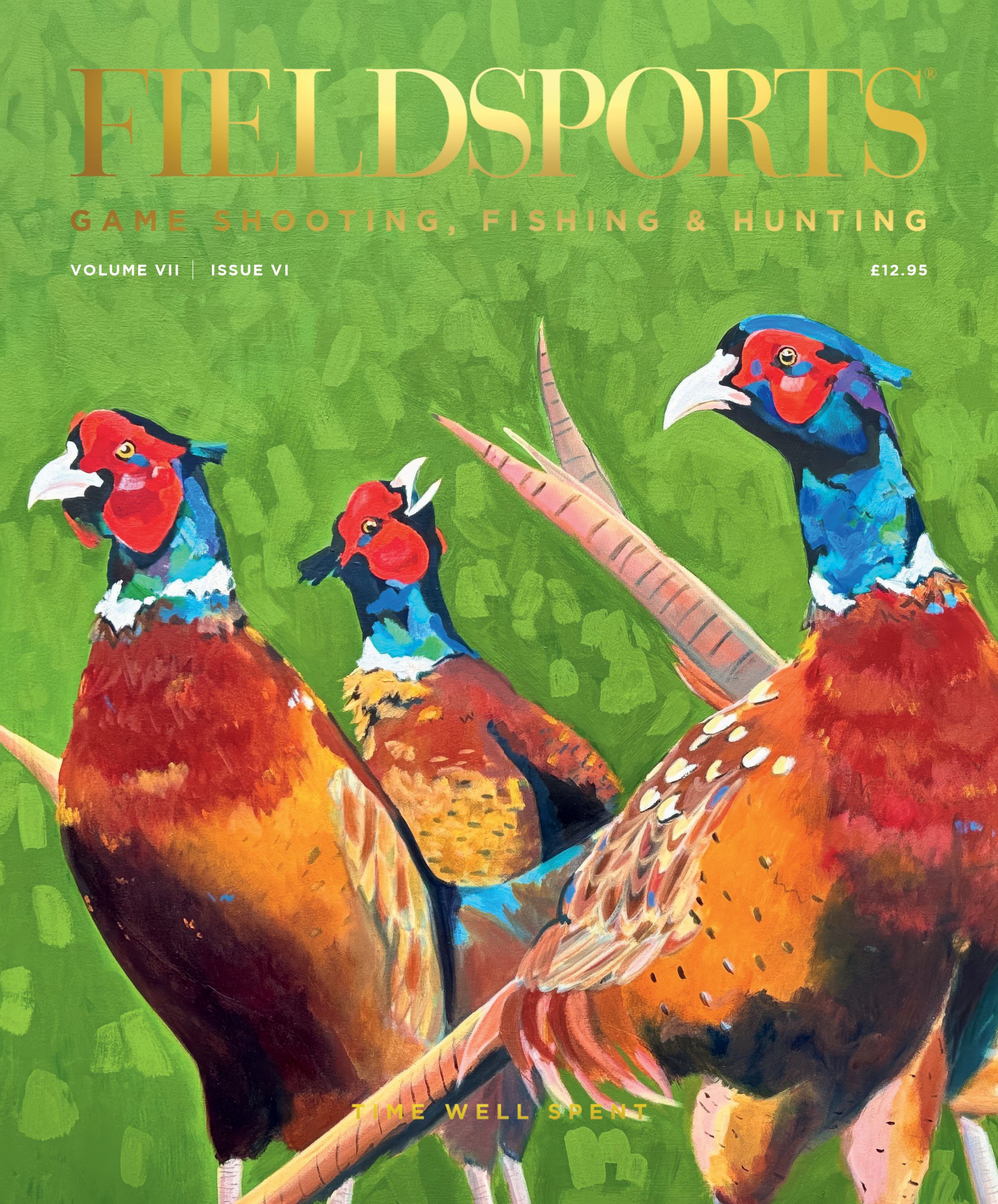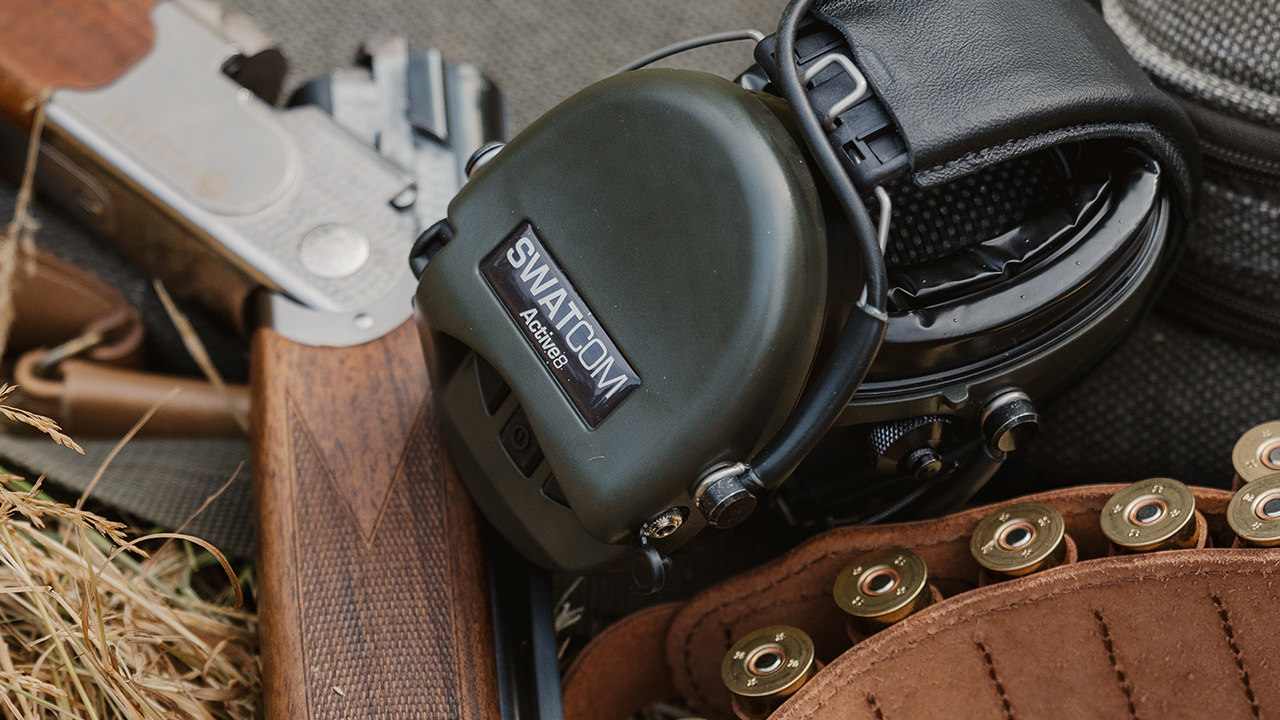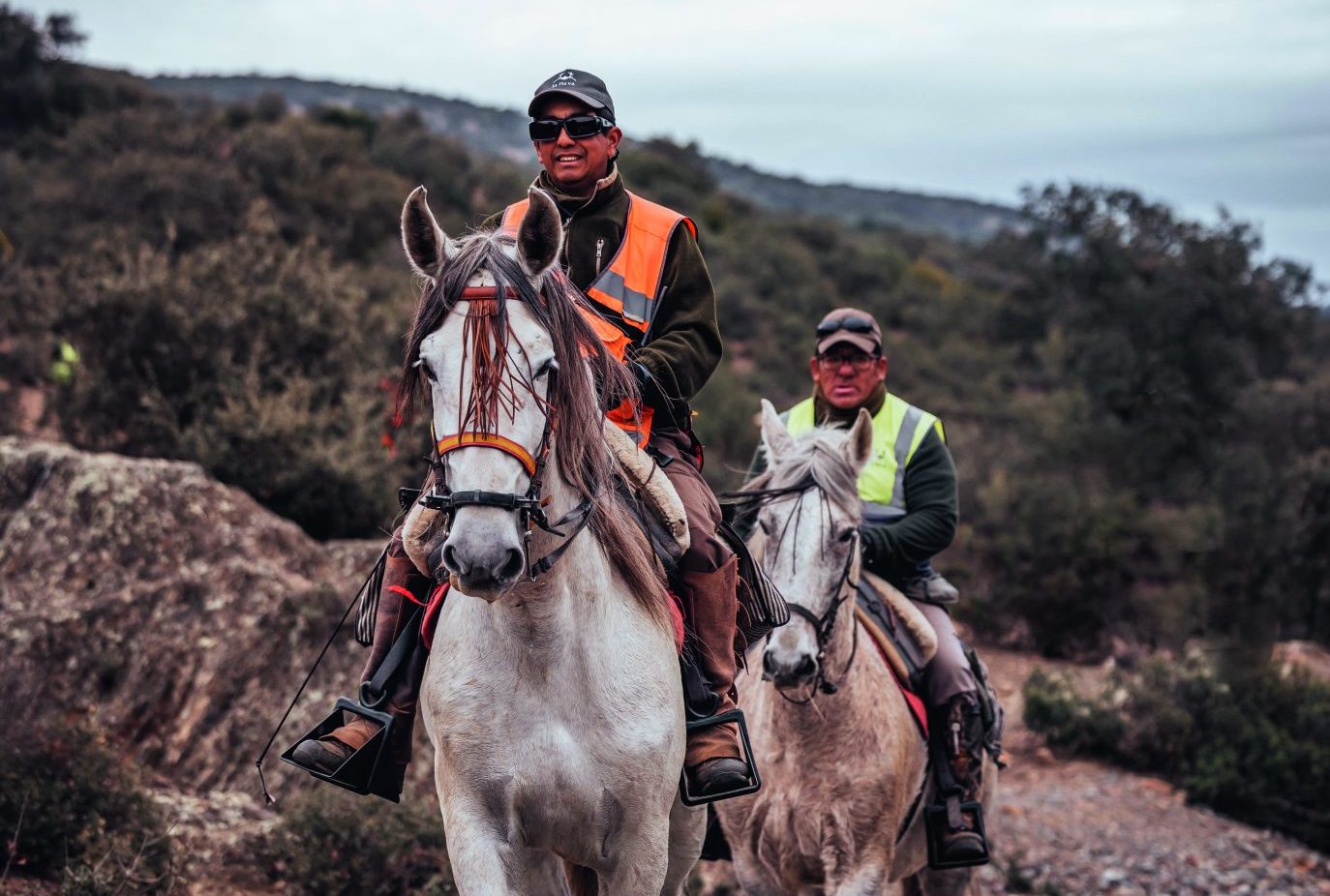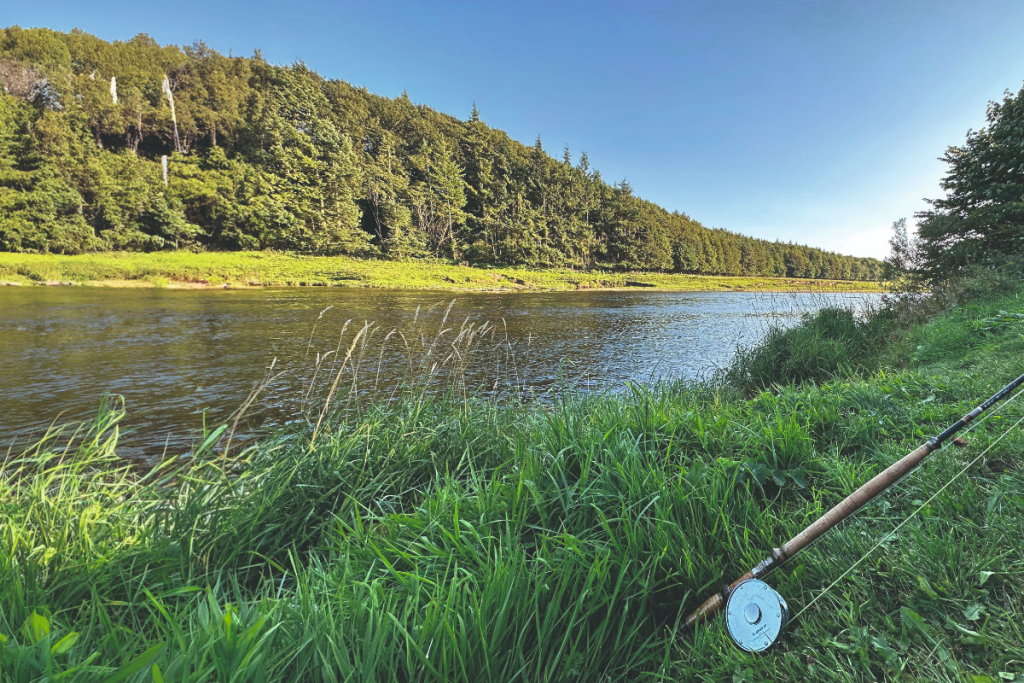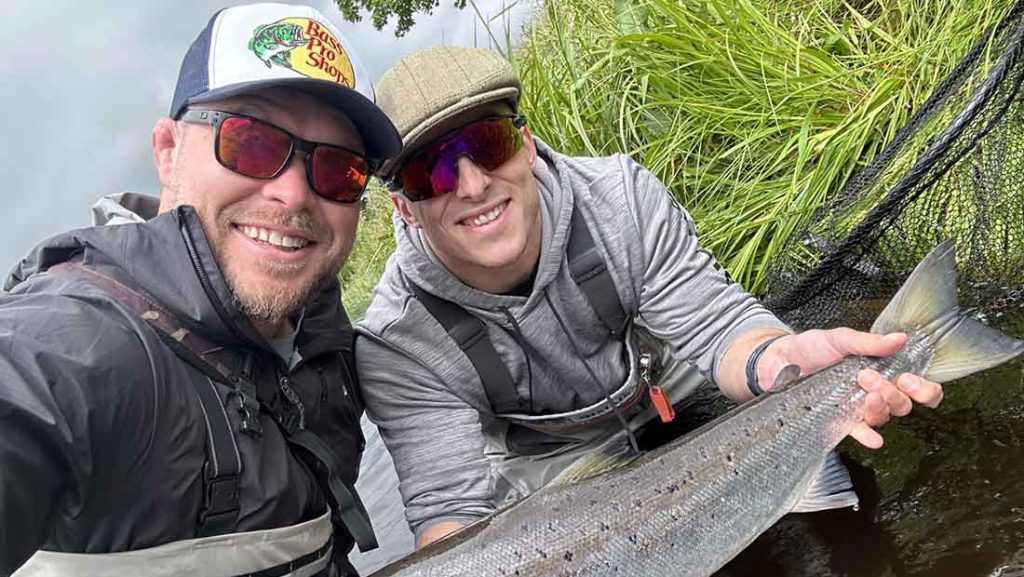On a spey quest
Avid fly angler and photographer Rasmus Ovesen embarks on his first ever trip to Greenland and loses his bubbling spey heart to the Kangia river

I draw a delicate ‘E’ in the air with the tip of my twohanded rod. The shooting head instantly follows, gliding serpent-like through the air, rolling over and briefly catching on the film of water beside me before I ready the rod for another cast.
This time, the casting motion is more direct and accelerating. More purposefully aimed. The rod bends deeply, slicing sharply and promptly through the air, then straightens, pointing directly out over the river. The shooting head springs to life again at the commanding flick of the rod. It forms a sharp loop and sails across the river with thin monofilament shooting line trailing behind. Along the way, the leader turns and extends, so the small orange Intruder fly plunges headlong into the water close to the opposite bank.
I gather the line, mend it upstream, then stand somewhat transfixed and dream-like as the fly drifts leisurely across the current. I have performed this mechanical maneuver countless times. Along rushing rivers in Norway, waded waist-deep out in swollen rivers in British Columbia, and by intimate small streams in Iceland, Sweden and Denmark.
I have wandered in a kind of trance, casting repetitively in the hope of achieving the impossible. As a salmon fly fisherman in the wrong millennium, I have taught myself to stubbornly wait for redemption. I have come to understand that salmon are a kind of phantom fish that only reluctantly – in an unexpectedly miraculous moment – ever materialise and take a fly.
I have come to learn that the hope of a sanctifying strike has slowly shifted from the realm of reality to that of dreams. It is in such a state of naïve and detached dreaming that a fish suddenly strikes. The loop of line between my hands disappears, everything tightens, and as I lift the rod, the surface is broken by a crackling, silvery fish that leaps acrobatically free of the water.
It is no phantom fish. It is no salmon. Yet the experience of chaos – of foaming water, furious runs, and wild thrashing in all directions – is the same. The mental fusion of pure euphoria is just as intense.
Abruptly awakened from my daydreams, with all my senses suddenly coming alive – in an acute moment of heightened awareness – I find myself ankle-deep in the Greenlandic river Kangia, beneath majestic, snow-covered mountain ranges, with a fierce, freshly risen 3kg Arctic char at the end of my line.
The impossible has happened. The dream has become reality!
THE KANGIARIVER
I have caught Arctic char before, both in freshwater and saltwater. Vividly coloured ones in Icelandic glacial rivers and mountain lakes, steel-bright specimens in the fjords of northern Norway, and veritable giants in Nunavut rivers on the edge of the Arctic Ocean.
Pound for pound, the Arctic char is likely the strongest and most stubbornly fighting anadromous fish there is. Yet it is only now that I have finally made the journey to Greenland – and it took a fair bit of persuasion from my good friend, Thomas Søbirk.
During the week I spend by the picturesque Kangia river, I find myself reflecting on why.
Beneath snow-covered mountains, in the desolate and inaccessible Kangia River valley, caught between the icy Davis Strait and the Greenlandic mainland’s glacier pockets and snow masses, I fish with a blend of eagerness and stoic calm. There is something about the river and its surroundings; something about the icy glacial water, which – for centuries – has licked and trickled over the bedrock and all the Precambrian moraine deposits, rock fragments, and slate stones. It does something to my inner rhythm.
It feels as though time has stood still in the river valley. It is impossible not to be affected by the overwhelming resistance to the passage of time that the entire area radiates. The river is an anachronism. While in my hectic life I am relentlessly carried away by a world in flux, the river is both in motion and at rest. In simultaneous elegance, it comes into being and is reborn as it lets go of itself.
A MATURATION PROCESS
Right now, the river is alive with fish. With each high tide, schools of Arctic char of all sizes move from the mouth toward the upper reaches of the river to carry on their genes. They are like the pulse of the river.
And as I reflect on it, I realise that it is the overwhelming intensity of this pulse that has kept me from fishing in Greenland before. As incredible as it may sound in our age – the dirty, selfcentred, nature-hostile Anthropocene – I have been afraid that there are simply too many fish in the rivers of Greenland.
I’ve heard colourful stories of people catching up to 100 fish in a day, and I’ve seen drone footage of riverbeds obscured entirely by fish. The fishing, quite frankly, has struck me as too easy, too monotonous, too meaningless.
I had to become a two-handed salmon fisherman before the idea of traveling to Greenland ever became appealing. I needed to be captivated by the elegance of a Spey cast, by the poetic and effortless dance of the line across the water, before the seed was planted.
I had to become addicted to the magic of that moment when the loop between my fingers suddenly disappears and everything tightens miraculously before I truly understood. And I had to endure three catastrophic salmon seasons before my heart finally broke, and I was ready to leave the Norwegian salmon rivers to other lost desperados and travel to Greenland instead.
PERECTLY BALANCED CONDITIONS
This late July week, the number of fish in the Kangia River is not a problem. If it is, then it’s a luxury problem. Although it’s early in the season, and the run has been extraordinarily late, there is starting to be a significant influx of fish in most of the river’s most attractive pools.
But there aren’t too many fish either. At least, not yet…
With fish in the river, it’s just a matter of relaxing and enjoying the serenity – a state that gradually settles over the mind like a soft blanket. The daily routine involves walking from the lodge, situated on a ridge at the river’s mouth, upstream toward the upper sections.
The river and its surroundings are breathtakingly beautiful. Snow-covered mountain ridges frame the wedge-shaped river valley, and at the very top, massive amounts of frigid glacial water pour down through a deep cleft in the landscape. The waterfall, which supplies the entire river with lifeblood, lies about 9km from the lodge, forming an impassably steep wall of water for the Arctic char.
It’s worth the hike on its own, and reaching it comes with a promise: a whole day of splendid fishing, slowly following the river downstream.
WHY GREENLAND?
In collaboration with local partners, Thomas Søbirk runs three other fishing camps in Greenland: Camp North, Erfalik, and Napiarisat. Now, the partnership he is part of has acquired the concession for the Kangia River, and Thomas is here to fish for the first time – together with me and a lively group of people from the US, Scotland, England and Denmark.
Greenland has an obvious appeal to us fly fishers, but the fact that someone like Thomas travels here repeatedly – without gradually losing interest – is something I’m only beginning to understand now that I am here myself.
Thomas has fished in Greenland for decades. He has explored river systems with great adventurousness and zeal, and he has returned year after year.
The business aspect is a relatively insignificant part of the answer as to why. Above all, it is about a clear love for the country; the people, the culture, the nature, and – of course – the fishing.
Amazingly, even though he has caught more and bigger Arctic char than most could ever dream of, fishing in Greenland never gets old for Thomas. However, this week, it seems as though Thomas has fallen in love anew. He has been captivated by the subtle magic of the Kangia River.
But that’s not the whole explanation.
Like me, Thomas has brought a trout spey rod, and from a distance, it almost looks as though every cast he makes is the very first ever in Greenland. And the smiles that stretch across his beaming face each time a fish surges upward and chases his fly reach from ear to ear.
QUESTIONABLE MOTIVES
The fish in the Kangia River are stunningly beautiful, well-nourished, incredibly strong and, fortunately, both moody and occasionally dismissive. I can’t help but handpick a fish with a small, weighted nymph from time to time. Nor can I resist skating a foam fly through some of the river’s calmer sections in the hope of a sudden surface explosion.
But, like Thomas, I would much rather fish with my delicate two-handed rod — my trout spey rod, which feels as if it was made with the Kangia in mind.
At first, it feels as though I’m self-deceitfully searching for something else. As if my motives are questionable. That I’ve indeed recognised that my love affair with the Atlantic salmon is both unhealthy and unrequited, but that I just can’t let go.
However, as the week progresses, I must admit that my light spey escapades are more than just a sort of consolation flirt – that I haven’t just traveled to Greenland to settle for something lesser. The ultra-light spey fishing makes such perfect sense here. It feels intimate, intuitive and engaging, and towards the end of the week, Atlantic salmon have been completely banished from my mind.
I am now a full-blooded two-handed trout angler. I have lost my bubbling spey heart to the Kangia river and its fantastic Arctic char.
I send another cast across the river, mend the fly and conclude that I’ve been far too narrow-minded and prejudiced when it comes to Greenland.
At that very moment, everything tightens up. An angry, slightly coloured male fish leaps into a half somersault clearing the water with my pink Intruder fly in the corner of its mouth, then disappears downstream sending electrifying jolts of euphoria through the fly rod.
The tortured screeching of the fly reel resonates affirmatively in my ears. And in a blissful, heart-fluttering moment, time stands still throughout the entire river valley.
In a world where dreams all too often shatter, the Kangia is a place where they come true. Even for a disillusioned two-handed angler.
All you have to do is allow yourself to be willingly swept along. I effortlessly do, and just like the river, I am reborn as I let go of myself.
The resulting feeling – of being acutely alive, with my two-handed rod clenched in a tight, expectant iron grip – is something I have missed for far too long!
FACTFILE: KANGIA, GREENLAND
The Kangia River is located on Greenland’s west coast, somewhere between Maniitsoq and Nuuk – right on the edge of the Arctic Circle, in an area surrounded by towering mountain ranges, fjords and glacial arms.
It is a medium-sized river with plenty of prime ‘swing water’, where you can swing streamers and tube flies in traditional spey fashion.
Surrounded by mountains and with a relatively steep drop towards the fjord, the lower 9km of the river offers a varied river environment where the char gather in larger and smaller pools, at seam edges, and along deep channels.
Spey fishing is especially exciting early in the season (in late July and the first half of August) when the large, bright fish migrate upstream. However, it can be practised throughout the entire season (up until mid-September).
The same goes for foam fly fishing, conventional single-handed streamer fishing, and nymph fishing (with 9’ #6 rods). In other words, there are plenty of opportunities to experiment and vary one’s fishing, and during the season, the upper parts of the river – up to the river’s impassable waterfall – become filled to the brim with fish.
The average size of the trout in Kangia is around 1.5–2kg, but significantly larger fish can also be found in the river. The largest caught have weighed around 7kg (though it’s not unlikely that even bigger fish exist).
The lodge is situated at the river mouth, overlooking the first large pools, and at high tide, one can have fantastic fishing just below the pool when schools of fish migrate upstream.
With three extensions and a lodge wing with single rooms, there is space for 10 fly-fishing guests. The standard is relatively simple but comfortable – especially considering the remote location of the lodge.
A hearty breakfast is served, after which packed lunches are prepared for the day’s fishing. Then, guests hike up the river and fish until returning to the lodge for dinner.
Expect to hike between 12 and 18km a day in hilly terrain, but look forward to the breathtaking natural experiences and the feeling of insignificance, timelessness, and being completely offline.
Getaway Fly Fishing is the exclusive tour operator on the river: flyfishgreenland.com
Related Articles
Get the latest news delivered direct to your door
Subscribe to Fieldsports Journal
Elevate your experience in the field with a subscription to Fieldsports Journal, the premium publication for passionate country sports enthusiasts. This bi-monthly journal delivers unparalleled coverage of game shooting, fishing and big game across the UK and beyond.
Each issue offers a stunning collection of in-depth features, expert opinions and world-class photography, all presented in a timeless yet contemporary design.
Save 10% on shop price when you subscribe, with a choice of packages that work for you. Choose from Print & Digital or Digital only with each journal delivered directly to your door or via the app every other month, plus access to past issues with the digital back issue library.

